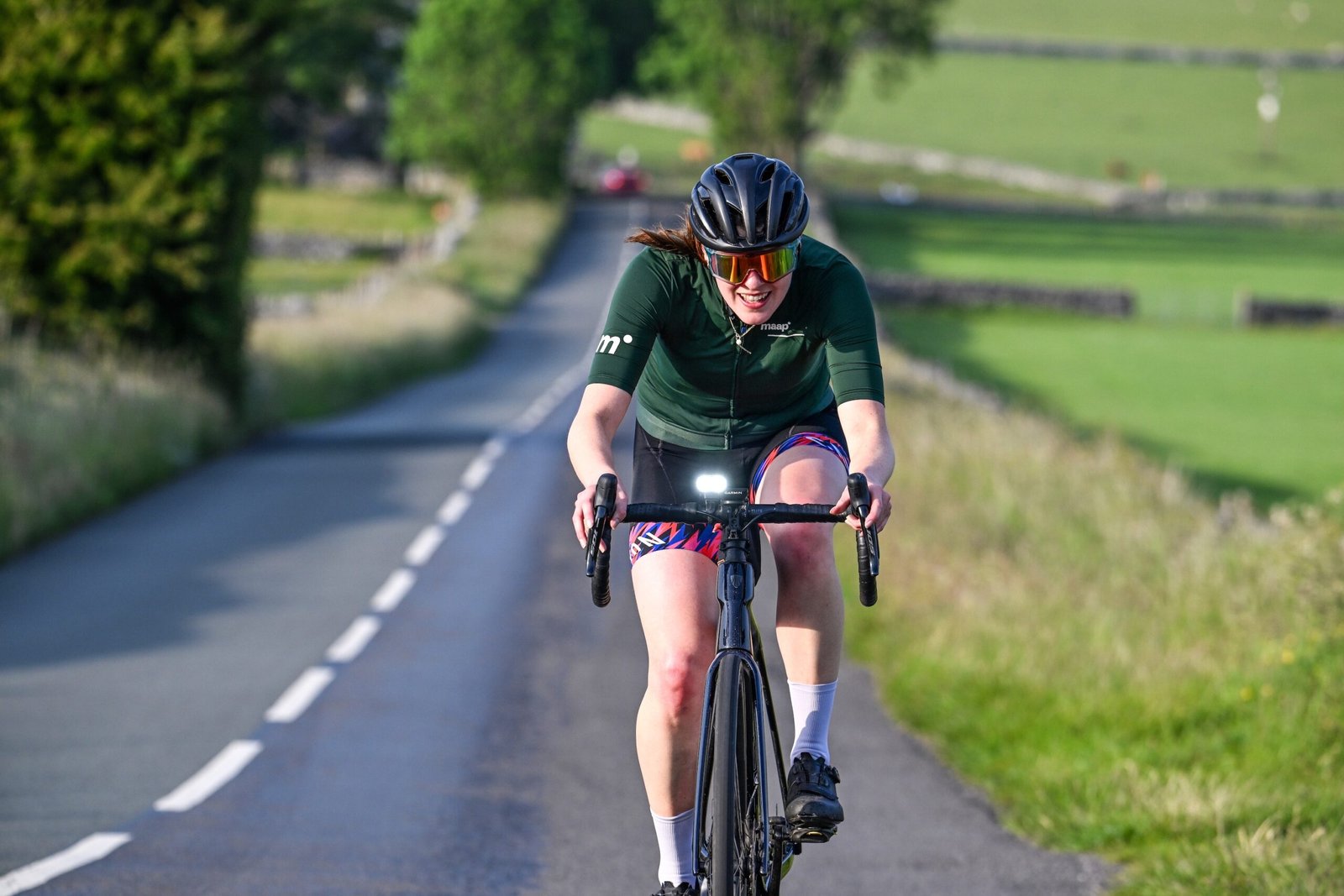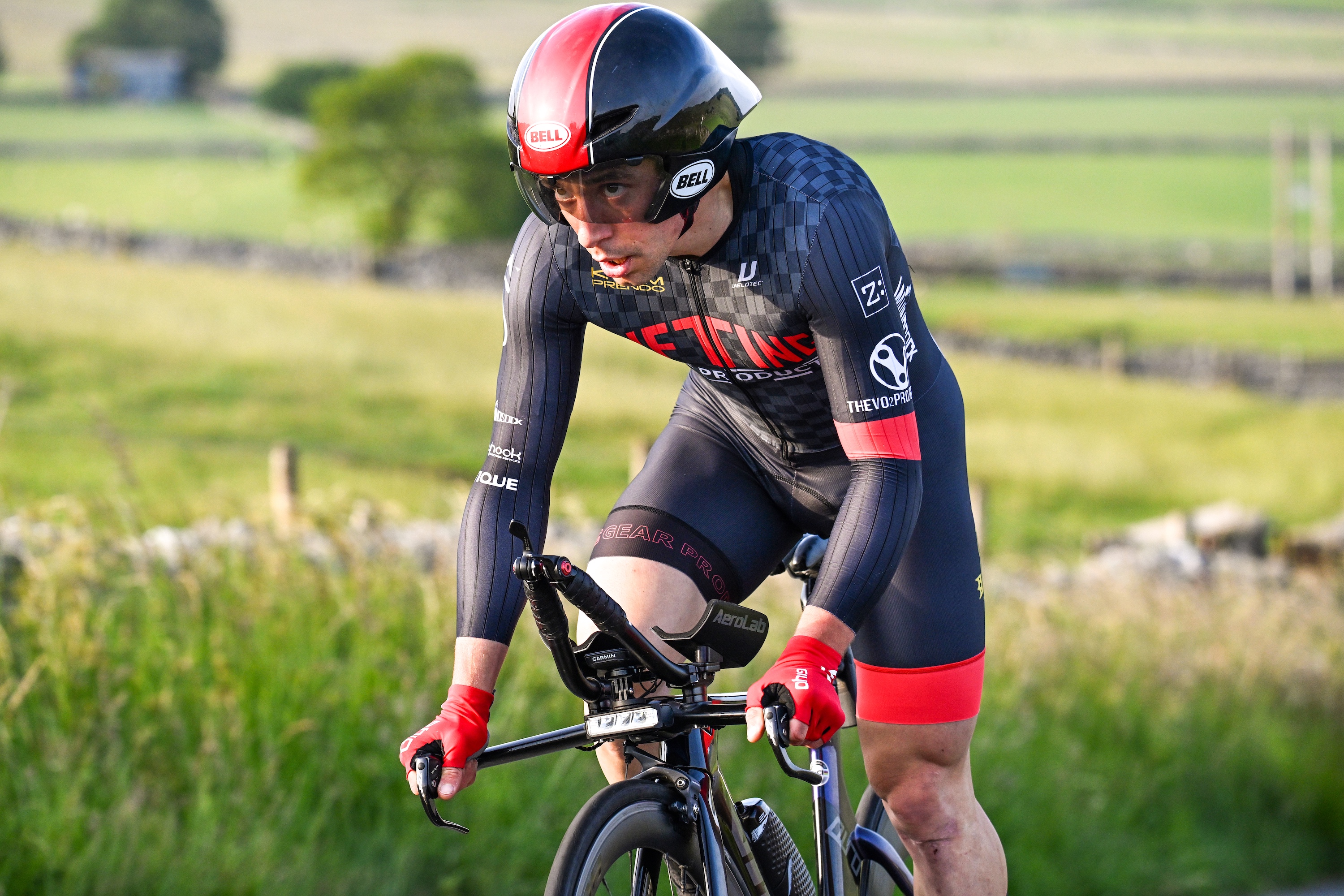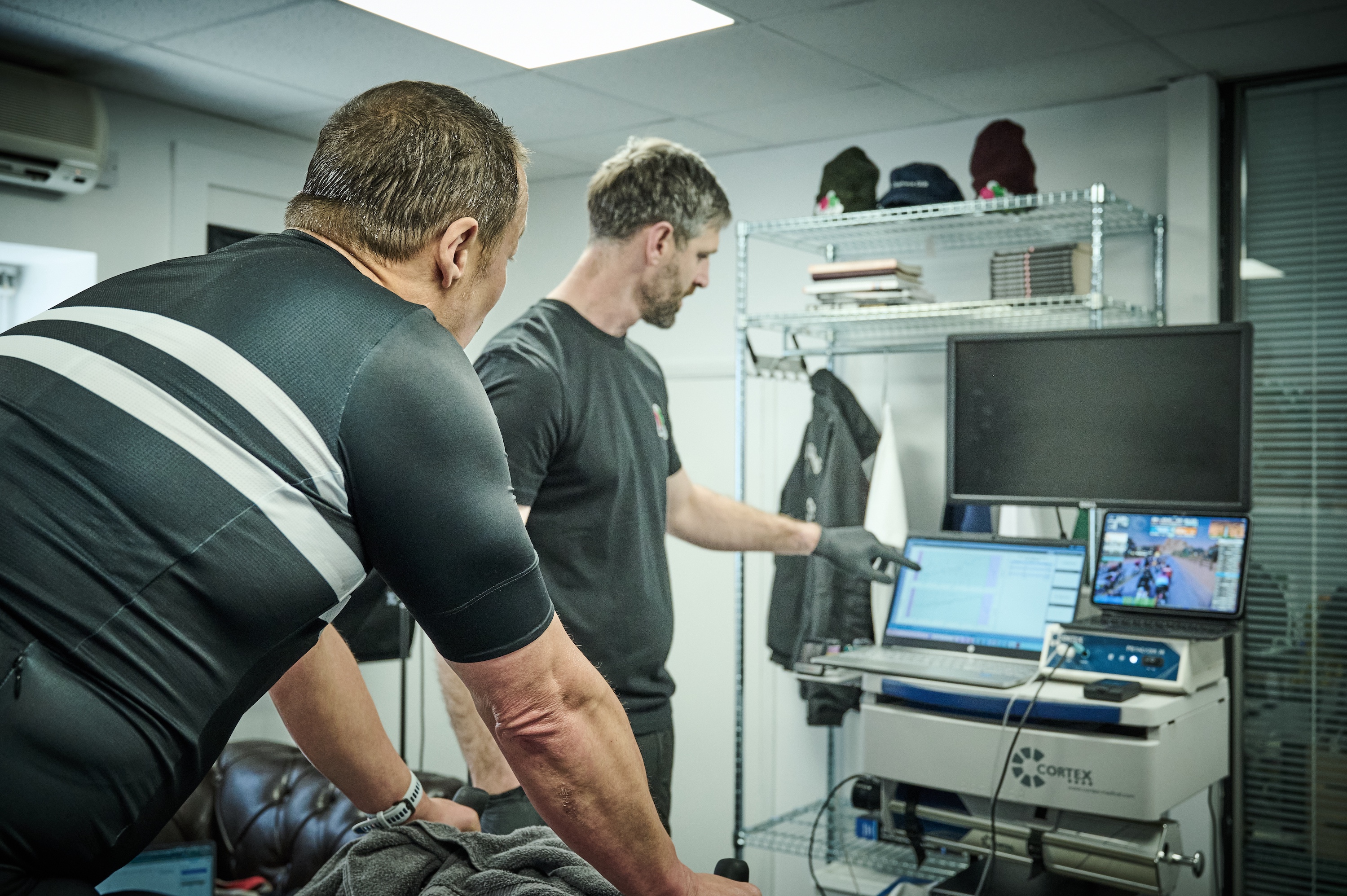
Time trials are the purest form of bicycle racing. There are no team tactics, no draughting, no lead-out trains, and no wondering if the rider behind is about to launch a surprise attack. The TT is known as the race of truth for good reason. It’s just you – your body, mind and soul – against the clock. No grey areas. You pedal as hard as you possibly can for the allotted distance and hopefully emerge on the other side with a PB, or at least without having thrown up a kidney.
Riding a time trial is a unique physical and mental challenge – a sustained effort that pushes riders to the edge of their limits. But what exactly happens in the body and mind during one of these solo races against the clock? Where does the discomfort come from, and how does it unfold across the effort? To find out, I went to the lab to lay down some of the key metrics that shape performance in a 10-mile TT-from lactate levels and oxygen uptake to carbohydrate and fat usage, heart rate and perceived exertion.
Miles 0-2.5
The first three miles of the test triggered sharp spikes across several metrics. In just six minutes, my heart rate leapt from a resting 70bpm to 167bpm. Lactate climbed to 1.6mmol/L – still manageable at this point, but the floodgates were beginning to creak. I was exhaling around 4,500ml of CO2 per minute, confirming what my ears already knew: I was breathing hard. My respiratory exchange ratio (RER) hit 1.10, indicating I was heavily reliant on carbohydrates over fat—a hallmark of high-intensity effort. Power output was holding steady at around 350 watts.
Get it right: The opening miles of a 10-mile time trial can make or break your ride. With fresh legs and lungs, there’s a strong temptation to go out too hard. This is why early pacing discipline is absolutely crucial. The pace you set in the first five minutes of a short time trial is likely the one you’ll have to live with – or suffer for over the rest of the effort. So ask yourself early on: can I hold this pace for the next 10 miles? If the answer is not a confident “yes”, ease off before you blow up.
Dr Hutch says: You have to start hard and settle into the effort reasonably quickly, because you’re aiming to cross the line having emptied the tank. You’ve got a little bit of headroom, so at this stage you should be aiming to go out with a negative split in mind.
(Image credit: Future/Andy Jones and Richard Butcher)
Miles 2.5-5
I won’t lie – concentrating during the lab-based effort was a real challenge. The oxygen mask, regular lactate sampling and clinical setting made it hard to fully immerse myself in the task. Physically, I felt fine: well-rested and free from soreness. But this section highlighted just how much of time trialling is a mental challenge.
My power had dropped. What I’d assumed was a conservative start at 350 watts quickly proved unsustainable. By the halfway point, it was clear I was fading. When Fletch asked for my RPE, I didn’t hesitate: “Nine.” (We were using a 1-10 scale, rather than the more typical 1-20.) My heart rate had crept up to 172bpm—still short of my usual 10-mile TT average of 180. I was exhaling 4,500ml of CO2 per minute, same as earlier, and my RER remained pinned at 1.10 – meaning I was burning almost exclusively carbohydrates. No fat-fuelled efficiency today. Lactate had risen to 3.2mmol/L, still shy of LT2, the second lactate threshold typically set at 4.0mmol/L. Had I gone out too hard? Quite possibly.
Get it right: Sustained efforts beyond five minutes require serious time spent in Zone 4—your threshold zone. Training here is essential for time triallists, as it builds the fast-twitch muscle fibre recruitment and energy system efficiency needed for this type of short-course racing. But perhaps more importantly, it hardens and programmes the mind. The pain of a 10-mile TT isn’t just about the physical — learning to embrace and endure it mentally is what separates a good ride from a great one.
Dr Hutch says: If you aim to raise your heart rate by two or three beats per minute with each quarter of the ride, you’ll be close to the pacing strategy I use. These days, I typically start at around 176bpm and finish somewhere near 186 or 187.
‘If you’ve chosen it, it’s not suffering’
CW’s in-house TT specialist Michael Hutchinson, AKA Dr Hutch – a multiple national champion across a range of distances—offered a refreshing take on the idea of suffering when we spoke to him for the ‘Going Long’ podcast. The physiological changes that take place over the course of a TT – as outlined in this feature – no doubt cause considerable discomfort. But Hutchinson takes issue with the term “suffering” in this context.
Rather than interpreting the predicament – the aches and anguish that set in during a race or training effort – as an ordeal to be feared or endured, he believes that these sensations should be viewed as a privilege. They are the signs of a healthy, capable body operating near its limit in a situation we have freely chosen for it – a luxury many people don’t have.
“I don’t like the concept of ‘suffering’ in cycling – because we do this voluntarily,” said the Doc. Undeterred by the risk of coming across as a nitpicking “pretentious arse”, he continued: “If you volunteer for it, you don’t get to call it suffering. There are points in longer [multi-hour] events where maybe the term becomes more appropriate, but in regular time trials… if you think you’re suffering, you don’t have enough problems in your life.”
It’s a sobering reminder. While endurance athletes often take pride in “pushing through the pain,” reframing that experience as chosen, even joyous, can change your mindset. You’re not being punished or tortured. You’re chasing speed, challenge, growth and that’s a privilege.
So next time you’re deep in the red, heart thumping, legs screaming – reimagine your grimace as a special kind of grin. You’ve worked hard for the right to feel this. The bottom line: embrace the burn, and enjoy the ride!

(Image credit: Future/Andy Jones and Richard Butcher)
Miles 5-7.5
With my RPE still a barely tolerable nine, this was fast becoming a lesson in poor pacing. Ideally, this is the point where you’d just be merely tickling the red line, but I had stormed across it. Acute discomfort had kicked in far too early. My heart rate had climbed to 176bpm, yet power remained stubbornly low, fluctuating between 320 and 350 watts. The volume of CO2 I was exhaling dropped to around 4,100ml/min – an early sign that fatigue was setting in. My RER dipped slightly, indicating a small shift back towards fat metabolism, but lactate had soared to 6.4mmol/L – well above threshold. At this stage, the body struggles to use lactate efficiently, but it’s not the lactate itself that causes discomfort. It’s the resulting build-up of hydrogen ions that brings the deep, acidic muscle burn. I was officially starting to unravel.
Get it right: Durability – the ability to maintain high power late in a ride – is a crucial and highly trainable skill. Try adding sweetspot or threshold intervals to the tail-end of your long endurance sessions. It’s here, in the final third, that fitness and mental grit are forged.
Dr Hutch says: Knowing your FTP is of limited value precisely because it is not a physiological marker. It’s widely used because it’s simple to test with a reasonable degree of confidence, or at least consistency. The second lactate threshold, LT2, if you’re in a position to use it, is an actual physiological point, and a more accurate determinant of when you’re on the edge.

(Image credit: Future/Andy Jones and Richard Butcher)
Miles 7.5-10
My power had dropped to around 320 watts, but my RPE was now pressing up against a full-blown 10. Despite the dip in output, I was still deep in the red—heart rate hitting 182bpm and CO2 output climbing back to 4,500ml/min. The finish line was near, and while my mind was willing, my body was faltering. RER had crept back up to 1.10 and, after a final push, my lactate spiked at 8.2mmol/L – the highest I’ve ever recorded. In a sprint scenario, I’d expect that number to go even higher.
Curiously, I found something extra in the final minute. Was that a purely psychological response – a final surge knowing the suffering was nearly over or had I been physiologically capable of more all along? A follow-up absolute power test recorded only a few watts shy of my pre-ride baseline. It was clear I’d left something in the tank.
Get it right: The final five minutes of a 10-mile TT are, without question, brutal. But with the end in sight, the brain can override the body’s protest. Focus on recognising when you’re about a minute from the finish – that’s your cue to empty the tank. Pain may scream that you’re done, but the truth is, you probably have more to give.
Dr Hutch says: The last time I had my lactate measured right at the end of an effort, it read 8.2mmol/L. I remember winning a national 10 once, with Ed Clancy second – his lactate at the line, I’d bet, was significantly higher than mine. He’s just built differently. I’m a very aerobic animal, and my physiology doesn’t lend itself to producing those sky-high lactate values.

